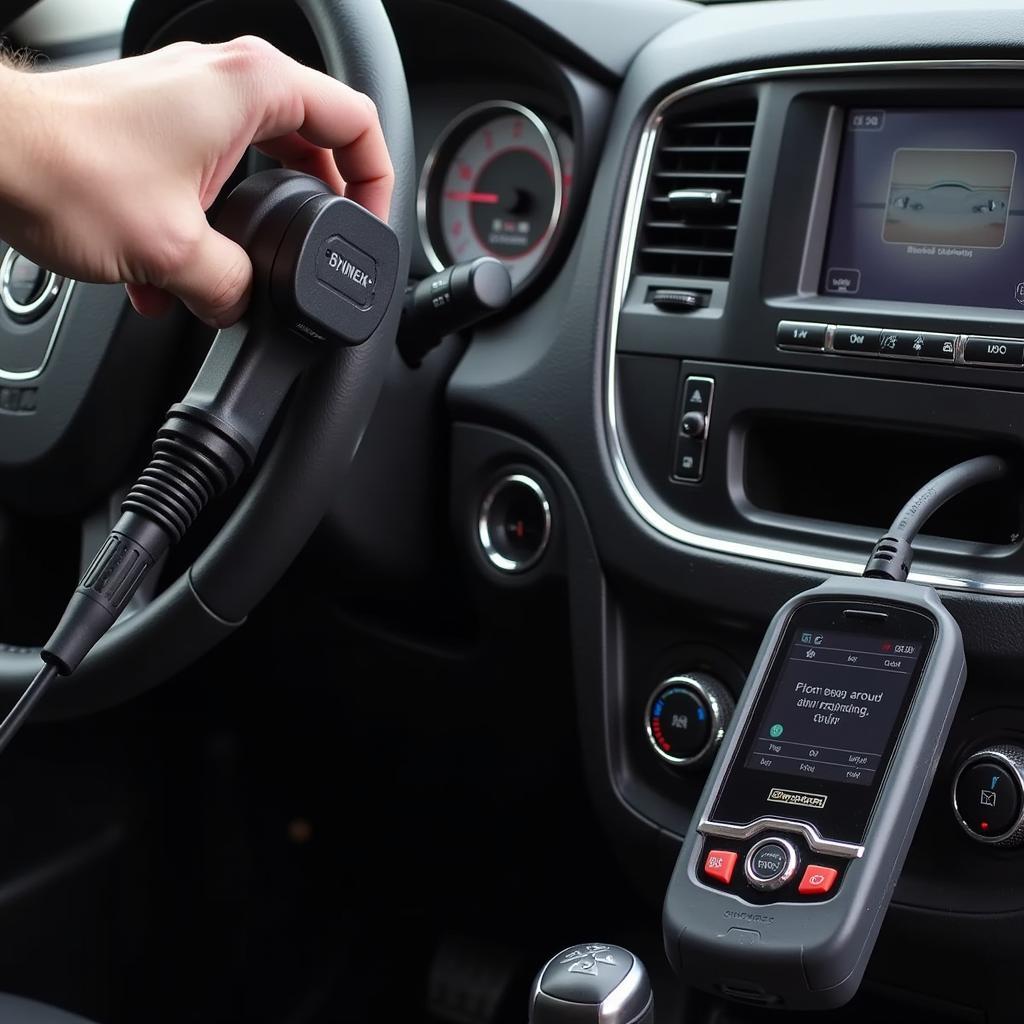Understanding how to run an OBD2 drive cycle for your Dodge vehicle can be the difference between a passing and failing emissions test. While the process might seem mysterious, it’s actually fairly straightforward once you understand the basics. This article will guide you through everything you need to know about OBD2 drive cycles for Dodge vehicles, helping you get back on the road quickly and confidently.
What is an OBD2 Drive Cycle and Why Does My Dodge Need it?
Let’s start by demystifying the term “OBD2 drive cycle.” It’s simply a specific set of driving conditions that allow your Dodge’s onboard computer (the Engine Control Module or ECM) to run its diagnostic tests. These tests monitor various emissions-related components to ensure they’re functioning correctly.
Your Dodge needs to complete a drive cycle because:
- Emissions Testing: Most states require passing an emissions test to register your vehicle.
- Resetting the Check Engine Light: After a repair, a drive cycle might be necessary to confirm the issue is resolved and turn off the Check Engine Light.
Factors Affecting OBD2 Drive Cycle Time and Conditions
It’s important to remember that there’s no one-size-fits-all OBD2 drive cycle for all Dodge vehicles. Factors that influence the specific drive cycle include:
- Model Year: Drive cycles vary depending on the year your Dodge was manufactured.
- Engine Type: Different engines have different emissions systems, influencing the drive cycle parameters.
- Specific Emissions System: The presence of components like an EGR (Exhaust Gas Recirculation) valve or secondary air injection affects the tests your car needs to run.
General Guidelines for a Dodge OBD2 Drive Cycle
While specific drive cycles vary, these general guidelines apply to most Dodge vehicles:
- Start Cold: Begin with a cold engine. Let your car sit overnight or for at least eight hours.
- Drive Normally: Drive at varying speeds, including city and highway driving. Avoid aggressive acceleration or braking.
- Maintain Steady Speeds: Hold a steady speed for a few minutes at a time, especially on the highway.
- Complete the Cycle: The entire drive cycle might take a few days to complete, depending on your driving habits.
Finding Your Dodge’s Specific Drive Cycle
The most reliable way to find the correct OBD2 drive cycle for your Dodge is to:
- Consult Your Owner’s Manual: Your owner’s manual often contains information about emissions testing and may outline the drive cycle.
- Contact Your Dealer: Your Dodge dealership can provide you with the manufacturer-recommended drive cycle.
- Use a Reliable Online Resource: Websites specializing in automotive repair information, such as OBDFree, often have drive cycle information for various makes and models.
Common Mistakes to Avoid
- Disconnecting the Battery: While this might temporarily clear the Check Engine Light, it doesn’t complete the drive cycle and could even reset your ECM’s learned data.
- Ignoring Driving Conditions: Your driving habits directly influence how quickly and effectively your Dodge completes its drive cycle.
- Using Generic Drive Cycles: Don’t rely on generic drive cycles; they might not be compatible with your specific Dodge model.
Tips for a Successful Drive Cycle
- Plan Ahead: Be prepared to adjust your driving schedule to accommodate the drive cycle.
- Find Open Roads: Opt for less congested roads to maintain steady speeds more easily.
- Monitor Your Dashboard: Keep an eye on your Check Engine Light to see if it turns off after the cycle.
 OBD2 Scanner Connected to Dodge
OBD2 Scanner Connected to Dodge
OBD2 Drive Cycle and Emissions Testing: What to Expect
After completing the OBD2 drive cycle, your Dodge’s ECM should have run all necessary diagnostic tests. During an emissions test, the technician will connect a scan tool to your car’s OBD2 port to read the test results. If all tests have run and passed, your vehicle should pass the emissions inspection.
When to Seek Professional Help
If you’ve completed the drive cycle, but your Check Engine Light remains on, it’s best to consult a qualified mechanic. They can use a professional-grade OBD2 scanner to diagnose the issue and recommend the appropriate repairs.
how to use obd2 scanner pt cruiser
Conclusion
Running an OBD2 drive cycle on your Dodge is crucial for passing emissions tests and ensuring your car runs smoothly. By following the guidelines outlined in this article, you can confidently complete the drive cycle and keep your Dodge on the road. Remember, always consult your owner’s manual or a trusted mechanic if you have any questions or concerns about your vehicle’s emissions system.
